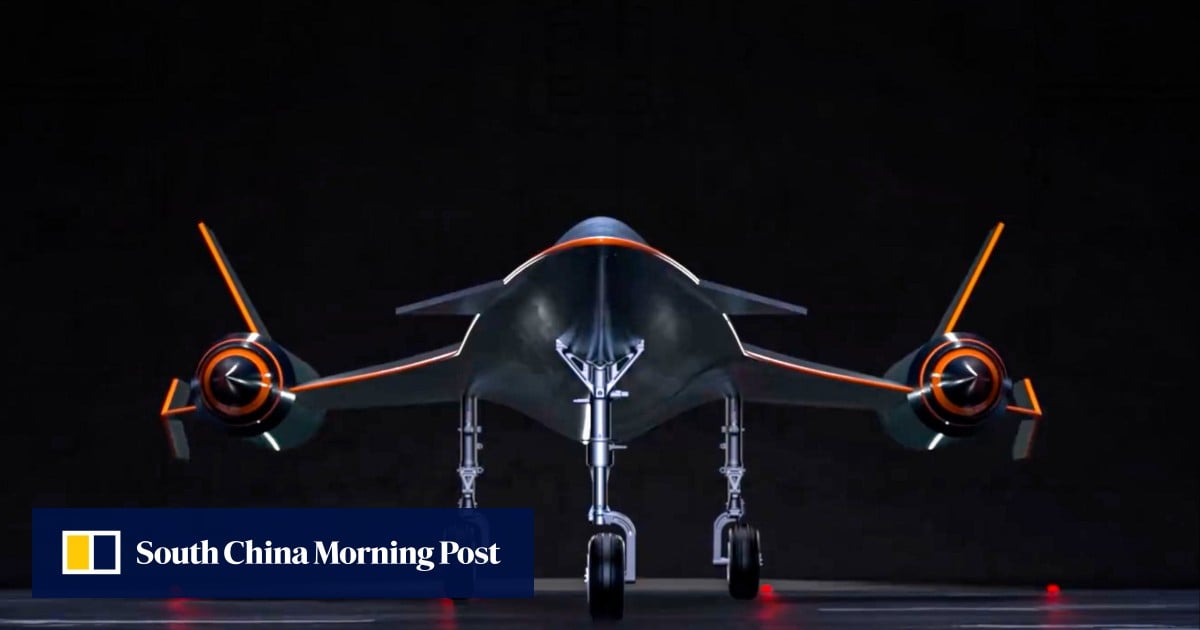- cross-posted to:
- technology@lemmy.ml
I feel like this is going to be for a very specific type of flight that will be in only the most necessary cases for ultra fast travel. Otherwise the vast majority of domestic travel will be by the high speed rails.
Yeah, but imagine the Chinese communist delegation landing in Washington in this Sci-Fi plane, while Americans watch and begin to think they have been lied to by their elites all along…oh yes, it’s going to be worth every drop of that fuel.
My guess that HSR making domestic air travel obsolete might be the very motivation for stuff like this. They’re likely betting that flying will only be useful over long distance going forward.
I’m no aerospace engineer but supersonic flight, no matter how technologically advanced we become, will always remain incredibly fuel inefficient because of fundamental laws of fluid dynamics. A supersonic aircraft would likely remain a niche market, never replacing our current transonic passenger aircraft. I’m betting the tickets would be prohibitively expensive who isn’t in the top 1% or paid for by a government agency.
Apparently, there have been some ideas on how to make efficient hypersonic vehicles. The vehicle could be operating in the upper atmosphere where there’s less drag. It would basically be an inherently long haul vehicle where you’d go up do most of the trip up high, and then come back down.
Per the article the prototype was flow at around 20,000m and they’re specifically going up there for the efficiency reason. The design also has a “high lift-to-drag ratio” that is apparently helping out.
This one has some more detail, no way to confirm its veracity however. https://theasialive.com/chinas-yunxing-jet-completes-test-flight-eyes-supersonic-commercial-travel-by-2027/2024/10/29
It could all be marketing hype, but there are a couple other companies in US and UK working on similar projects.
Yeah, I don’t think it’s an intractable problem overall. I think it’ll be interesting to see if they can make it work.
The upper atmosphere would probably have less drag, but the lower speed of sound at high altitudes would exacerbate the issues of supersonic flight and require specialized, expensive aircraft. It may become more efficient, but I still see it as mostly a niche market.
Initially for sure, but I imagine as with any tech once it gets established, the costs will come down to make it more broadly applicable.
It kinda looks like the SR-71 (except it’s not used to bomb civilians so it’s way better)
Blackbirb actually literally tried to carry weapons but it didn’t work out, instead it just looked at things - and let others kill those things.
So a flying supersonic rat
A super-bat!!
So… it’s still used to bomb civilians just not directly
Yes.
Prob took before and after photos too.
Legit perv.
This looks cool. Would be great if this technology will take a flight. Lockheed Martin is also developing a supersonic civil airplane, X-59 is scheduled for a test flight this year. Comparing both projects is hard given the scarce technical details, but the Chinese plane has much higher maximum speed.
Didn’t the internet essentially make the Concord obsolete? Its main purpose was flying businessmen from New York to London/Paris so they could finish major transactions before the markets closed.
Tickets were also 20,000 dollars in 1985 money, so even if China makes a plane with a modern ticket price of 10,000-15,000… who exactly is the customer base for this?
I dont think this is comparable to the concord. The concord was more like an oversized fighter jet. It had more issues with it than just cost. Like sonic booms. Just wasn’t practical. This is more like an SR-71. Much more practical as it flies much higher and theres less air so sonic booms arent an issue for people on the ground so much. In general air travel started out really expensive and got more affordable over time. The concord never did as it just failed outright. This has potential tho. Mainly for more long distance travel. Like 5-10k+ miles the time it saves is gonna be huge at those distances.
Hopefully this goes somewhere, but even with a modern price of 5,000 dollars. I’m still confused as to who this plane is meant to serve. It is outclassed by trains for regional travel, and is entirely uneconomical for long distance flights since while it can save fuel while cruising, it will chew through a massive quantity of fuel while accelerating and climbing.
Also the Blackbird sacrifices a LOT to be as light and aerodynamic as it is, as is evident by the pilot requiring an entire spacesuit. That’s not really conducive to commercial travel.
The saving is time. An suborbital flight could get you from NYC to Beijing in under an hour theoretically. Altho idk how fast this specific plane is. But ur not understanding what i mean about price starting high. Its not “modern” pricing. Its just that things like this start out as a very niche luxury market and then over decades they expand and prices come down as they get practice and refine designs, and techniques to lower costs, and economy of scale takes over. So if it suceeds as a luxury time saving product for a niche use (Like business people, politicians etc) then over time it can be expanded to everyone and prices can come down.
As for sacrifices the SR-71 made the SR-71 was a military craft made for stealth bombing. It had a lot of equipment and stuff going on a normal plane wouldnt need.
I think you misunderstood what I meant by the word modern, I should have worded myself better, but what I meant is that even if prices were reduced significantly to 5-10 thousand dollars per ticket as compared to a current day valuation of the approximately 60,000 dollars that a 20,000 dollar concorde ticket would have cost in 1985… who is able to afford that price?
It doesn’t matter what technology comes into play, bringing the price of a suborbital liner to modern day airfare prices would be impossible. 5-10 thousand dollars from 60 thousand is already an astronomical drop. What customers have 5-10 thousand dollars lying around for a single flight?
There is no economy of scale for a niche luxury product with more economical alternatives. You have an incredibly small subset of customers, and dropping the price from 10 thousand to 8 thousand isn’t going to drive up business at all. Especially when a one way flight from New York to Beijing is 400-1,500 dollars, and as has been shown through endless industry studies, the primary concern for airline customers is by far price.
Youd be surprised how many of them there are. Lots of airfare these days already costs thousands of dollars. Im not in that tax bracket but i know there are lots of people with just heeps of money to burn. My guess is this would just be the new first class. Not only is your seat better its on a different plane and you get there faster.
True, but now you’ve just invented the Concorde problem again. How are you going to fill enough seats on a daily/weekly basis to justify a route? That’s if you even manage to make this economical.
Concorde was killed by the internet as major businesses could simply have a video call or email conference instead of needing to send physical delegates to major financial capitals. That took away their core repeat customer base, and they weren’t able to recover past that point. Who will be the main customer base for this?
Your wrong about why the Concorde failed. This isnt the Concorde. The Concorde had horrible range, and fuel efficiency and it wasnt very fast compared to a suborbital flight either. You couldnt even get to the west coast from NYC with it before it ran out of fuel. Plus it had horrible sonic booms that people under it couldnt stand so it was only flown over water usually. This is an entirely different aircraft they did not just recreate the Concorde. The only similarity is that its a supersonic plane meant for civilian use. I am not an expert on this plane but i think it would be a mistake to assume the designers of this plane weren’t aware of the concordes failures. They wouldn’t make it if it didnt have a atleast plausible use case. We will see if it fails or not tho in the future.
It’s all going to depend on what the ticket prices will actually be. I’m going to go out on a limb and assume the company developing these planes has done the basic math to figure out whether it would be remotely profitable or not. It’s been many decades since the Concord was conceived, and it’s entirely possible that the operating costs for the new approach are much lower.
What worries me is that those profit calculations don’t mean that Chinese firms aren’t just as susceptible as western firms to speculative investing and venture capital interests.
The role of the market in China is very different from the west. SOEs control the commanding heights of the economy. These pillars of industry, spanning banking, energy, and telecommunications, form the bedrock of the economic system, accounting for roughly a third of its GDP. While private companies and a vibrant stock market exist, they operate under a socialist framework, guided by the principles laid out by Chen Yun. Chen advocated for a “birdcage economy,” where the market acts as a bird, free to fly within the confines of a cage representing the overall economic plan.
His approach, adopted in the early 1980s, allowed for use of market forces for efficient allocation of resources, while the state maintained ultimate control over the direction and goals of economic development. The state, acting as the planner, sets the overall goals and priorities, while the market, acting as the allocator, determines the most efficient way to achieve those goals.
While Chinese stock market plays a key role in raising capital for companies to invest in productive activities, it operates under strict regulations to curb speculation and short-term profit-making, ensuring its primary function as a tool for economic development rather than a platform for unchecked wealth accumulation.
Concrete examples of these regulations include restrictions on margin trading, limits on short selling, and measures to prevent insider trading. When companies prioritize profit maximization over social value, regulators can intervene with corrective action. The recent dismantling of the Alibaba Group into six separate business units serves as a clear example of such action, taken to curb the abuse of monopolistic power among the country’s tech giants. In this way, the state is able to exercise oversight and regulation to ensure that the markets serve the broader interests of society.
Private companies, while encouraged to innovate and compete, are also expected to align their activities with broader state goals. This entails contributing to social welfare programs, investing in research and development, and adhering to environmental regulations. In essence, private enterprise in China functions within a framework that prioritizes the collective good and long-term sustainability over the unbridled pursuit of profit and short term growth.
I know all this. Nothing you mentioned prevents Chinese companies from making bad or speculative investments. Regulatory authorities are not going to step in just because one company invested into a bunk project that went nowhere. Hundreds of companies go bankrupt in China every week, and hundreds more are formed, as it would be a bureaucratic nightmare for the central economic office to micromanage the investments of individual firms. Speculative venture capital is also not “gaming the system” as insider trading and short selling are, and the entire point is that there is a high risk to those investments.
I don’t see how you describing China’s mixed command economy is at all relevant to a small startup firm taking a risk on a single aircraft frame. A bird in a cage can still choke itself on a poor investment and die.
Sure, and there’s nothing wrong with any of that. The system allows for flexibility that’s necessary for innovation. Companies trying speculative things is how technology progresses. Some ideas will be good, others will not. Meanwhile, the government nudges overall development towards particular goals that are seen as socially useful.
If this particular company is making a product that’s not viable then they will die, and that’s perfectly fine. If their idea works then it will produce something useful that will advance the state of aeronautics in China. Either way something useful will be learned in the process.
Wasn’t the problem with concord that it traveled too fast to travel on most flightpaths because the sonic boom could damage buildings on the ground below?
That and fuel consumption. However, given that high speed rail is making domestic flights largely irrelevant at this point, it might make sense to focus specifically on long haul flights.
… Gives thousand mile stare in not having low speed rail
as a Canadian I can relate
You can mitigate both problems vastly with design - especially (all kinds of) noise levels, which were an afterthought with Concord (which was still used 27 years).
The sonic booms alone don’t need to be so huge & take do much energy.
Still don’t think we need such (or that many) planes tho - but if we (for some reason) do & there is negligible difference to subsonic ones, why not.











